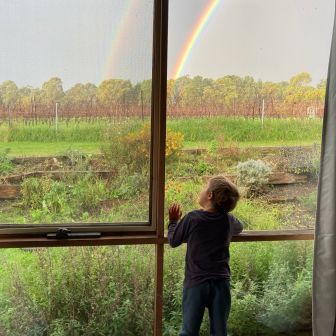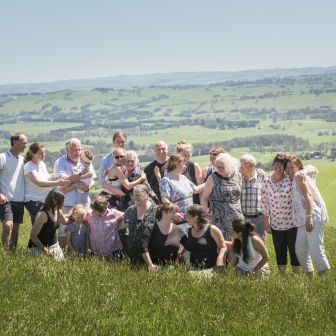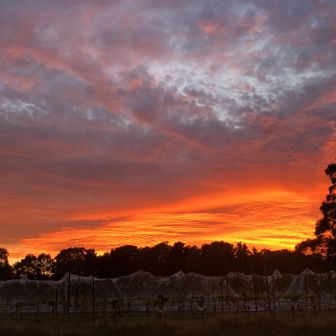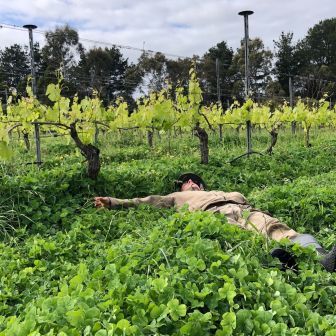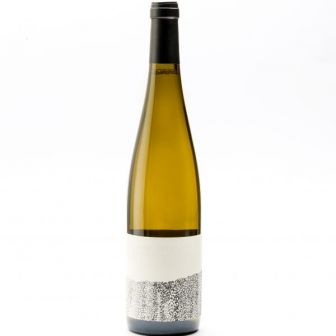Planting thoughts
August 26, 2019
Dear friends
When we bought The Wine Farm five years ago we inherited eight varieties of grapes, all planted on their own roots 20 to 25 years prior, in two types of soil and varying states of health. As much as we wanted to stamp our mark on the property from the get-go, we resisted the urge to come out swinging our chainsaws and shovels. Instead we scratched that itch on the roses and put our energy into rejuvenating the soils and giving the vines – all the vines; even those varieties we weren’t naturally drawn to – lots of love, allowing them to show their true potential in this cool climate over several vintages.
We knew the region was pegged as Pinot country but we wanted to see for ourselves which of the eight varieties – three red, five white – were happiest in our new home. It would have been foolish to swan into a region we’d never farmed before, knowing little of the climate and its nuances from one year to the next, and start ripping out vines without taking the time to understand them fully.
We also needed to see how each variety adapted to our way of farming. Having been brought up on a steady diet of herbicides and pesticides, how would they respond when we cut off their meds?
As mentioned in our last Letter, the Cabernet Sauvignon was the first to go. The vines produced a pretty decent drop – a light, fresh Cabernet more akin to a French Cab Franc than an Aussie Cab Sauv – but only two out of our first four vintages, when the weather was a little warmer and drier than usual, produced something we were really happy to hang our hat on. It’s clear to us now that this region is just too far south for Cabernet Sauvignon to ripen properly year in year out. Perhaps 20 or 30 years down the track in a warmer climate it will be just right – but for now we’ve said our goodbyes. Immediately to the west of these vines lie some of the happiest Chardonnay vines we’ve seen, so we’ve grafted all the Cabernet over and doubled our Chardonnay crop.
Then we have Gewürztraminer. Another variety we would never have planted ourselves, and seldom choose off a wine list, but that is actually very well suited to this cool region. The vines were happy and healthy (possibly due to their roots being in some of the best soils on the farm) and the wines true to style with an intoxicating perfume of lychees and rose petals by the bucket load. But in the end we decided that given we rarely feel like reaching for a bottle ourselves, we should probably put our energies elsewhere. When you have limited space to farm, you have to fill it with the very best, so while the knives were out in the Cab plot, we grafted the Gewürz over to our beloved Pinot noir. In our eyes a variety far more worthy of this prime real estate.
This operation took place early last summer and the bandages are still on. They missed vintage 2019 but come next harvest we hope that the majority of these vines will be yielding their new fruit.
While grafting gives relatively fast results when you want to change varieties, there’s a lot of merit to replanting vines; nurturing fragile young plants from the very beginning, encouraging their tender roots to dig deeper and properly establish their place in our soils.
So this year and next we begin the slow task of replanting some of the vineyard. Last weekend we opened the gates to the bobcat and said goodbye to three short rows of Riesling. Gasp!! That was hard to watch. But fear not, Riesling remains one of our very favourites and certainly loves life on The Wine Farm. These particular vines were underperforming but our main parcel of Riesling is thriving and we’ll continue to farm, make and drink it with love for many years to come.
Next April, once harvest is done and dusted, we’ll also scratch our Sauvignon blanc. This was a trickier decision given the wine we produce from these vines has managed to challenge even our own prejudices against the variety. Aye, it’s delicious… but it’s still Sauvignon blanc.
Pinot gris is in the same camp. We so enjoy drinking this wine. In fact during some parts of the year it’s probably the wine we feel like drinking more often than any other and if space was not at a premium we would certainly leave these vines be. But as we get more serious about our offering, we need to make some tough choices. We need to focus our thoughts on a few varieties and really do them justice. The Pinot gris will bow out gracefully in four or five years time and there won’t be a dry eye in the house.
We’ll be replanting these vines for the next generation so have made the decision to use Phylloxera-resistant rootstock, mitigating the persistent risk of this highly destructive pest wiping out the vines (always at the back of our mind with an ‘Infested Zone’ on our doorstep in the Yarra). If planted properly, and provided we graft the right variety onto the rootstock when the time comes, these vines should still be making great wine when we’re six feet under.
But which variety to plant? This is a big decision. What’s right for our climate now may not be suitable in 30 years time. But five years out of five on this farm we’ve been thrilled with the quality of Pinot noir, Chardonnay and Riesling our soils can produce so we’re keeping what we’ve got and leaning towards replanting with one or more of these. There are plenty of more fashionable varieties we could go with but when you look at how these vines grow and how the bunches and flavour present in the grapes it’s clear why they are so well loved across the globe. The berries are small, the flavours fine and the acidities high; the palates have tension and length and if handled gently, can all give restrained power and drive. We don’t ask for anything more in the wines we drink so feel very happy to home in on these three varieties.
The last variety we inherited on the farm is the Syrah. The Syrah will also stay. It’s planted on very different soil to the Pinot noir, Chardonnay and Riesling – a little less complex and more suited to white wine than red. But after a couple of years of trial and error we now handle our Syrah as a white grape and it has well and truly justified its place on our farm, reliably turning out a zingy, dry and well loved Rosé.
So while we cosy up to the neighbours and wait patiently for a parcel of tightly held land to come available somewhere within a short tractor ride of our home, we’ll carry on working with what we’ve got and making the best wines we can on The Wine Farm. We’ll continue to work without chemicals. The vines are definitely better off on their new, clean diet, with a noticeable improvement in yield and, more importantly, flavour. And we’ll continue to refine our management of the fruit after picking to respect that flavour and not mask it with unnecessary additions and actions in the cellar.
There’s always something to think about.
Cheers
Anna








